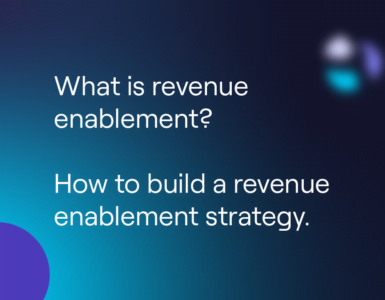
Any company that relies heavily on salespeople naturally wants a highly-qualified person to lead the sales force. Judging by the modest tenure of sales leaders in their role, according to recent LinkedIn data, something is amiss. Looking at 150 past sales leaders (VP sales or equivalent role) at the 100 largest U.S. manufacturing companies, one in four lasted in the job less than two years, and half lasted three years or less.
Hiring a sales leader involves the following steps.
- Profiling: Specifying the characteristics and competencies candidates need.
- Selecting: Vetting candidates and choosing one who best matches the profile.
- Attracting: Making an offer and convincing the candidate to join.
- Integrating: Helping the new leader get off to a strong start.
A mistake at any step can lead to a candidate’s failure. We see several hiring errors happening repeatedly across the steps. By avoiding these mistakes, companies dramatically increase their chances of success.
Mistake #1. Emphasizing “height” over “slope” when profiling and selecting candidates
The CEO of a startup with seven salespeople hired a successful VP sales from an established company in the industry. Soon, it became apparent that leading a seven-person sales team aspiring to grow to 100 people was very different than leading an established 100-person team. The leader was uncomfortable playing the roles of VP sales, sales manager, and salesperson, often on the same day. Also, he was used to relying on systems, for example, to support hiring and training. At the startup, these support systems had yet to be created. After only a few months, the sales leader departed.
Fortunately, the CEO made a better hiring decision the next time around. The selected replacement had begun her sales career with an established company, and then had moved to a startup in another industry. She’d started there as an account manager but was quickly promoted to first-line manager, a role in which she excelled. The candidate showed evidence of “slope” i.e. potential to learn, grow, and adapt to a new situation. With the rapid pace of change in today’s sales environment, “slope” is often more important than “height”–i.e. a sales leader’s experience and current level of skill.
In retrospect, the CEO realized the departed leader likely hadn’t had sufficient “height” either. His experience operating a large, established organization wasn’t immediately relevant. It would have been better to have had experience transforming a sales force from small and entrepreneurial to bigger and process-driven.
Mistake #2: Under-emphasizing cultural fit when profiling and selecting candidates
A successful company was restructuring its sales force to use more digital and inside sales channels. The plan involved downsizing the field sales force and establishing a new strategic accounts team to handle the 70 largest accounts.
To lead the strategic accounts team, the company hired a seemingly ideal candidate from a related industry. The candidate had successfully built a strategic accounts organization from the ground up in her last job. Her mandate was to replicate her success in the new company.
After just eight months, the new leader left the company in frustration. She reported a “lack of support for making tough decisions” about account and personnel assignments. Meanwhile, sales team members complained about the new leader’s “autocratic style” and “poor teamwork.”
What went wrong? The company had been so impressed by the candidate’s experience, that it failed to see how her autocratic work style would clash with the company’s team-oriented sales culture. When the company hired her replacement, emphasis on culture-compatibility helped ensure the right candidate got selected.
Several dimensions of cultural-mismatch contribute to the failure of external sales leader hires. Leaders who come from entrepreneurial sales cultures wither in controlled, process-driven cultures (and the other way around too). Sales leaders who come from cultures of closely-managed sales activity will struggle to fit into a culture that’s highly results-focused (and vice versa). Unless you are consciously trying to change the sales culture, culture-compatibility is an important sales leader hiring criterion.
Mistake #3: Having insufficient rigor in interviews when selecting and attracting candidates
Of course, demanding interviews improve the effectiveness of candidate screening. But rigor in the interview process has a surprising additional benefit.
A CEO was looking to hire a sales leader with the experience and discipline to scale the sales organization. The CEO met an incredible candidate at an industry conference. As the VP sales, he had led an early-stage company in the industry to 60% year-on-year sales growth for five straight years. After a 30-minute conversation, the CEO knew the candidate was right for building and leading the sales team and offered him a job on the spot. The offer included a 40% salary boost and attractive stock options. Three days later, the candidate turned the job down. He said he was happy where he was.
The end to this story is not surprising. No one wants to join a club that’s easy to get into, especially a sales leader who is competitive and ego-driven. A rigorous interviewing process is attractive to A-talent. Interviewing for a sales leader position is a mutual process. While you are evaluating the candidate, the candidate is evaluating your company and its sales environment and culture. A 30-minute casual conversation isn’t enough to allow you to select the best candidate. And it also doesn’t give the candidate enough information and confidence about the job, the sales team, the company, and what is takes to succeed.
Mistake #4: Not paying enough attention to integrating new sales leaders
As discussed in another HBR article, integrating newly hired executives is critical to their success. This is especially true for sales leaders for whom relationships are the lifeblood of their role. Successful integration goes beyond traditional onboarding. It hinges on solid mentorship and sustained formal and informal interactions with peers, colleagues and subordinates who can help the new leader figure out how the organization really works.
For example, how important is building consensus when making decisions? What informal sources of influence and power can help the leader get things done? Effective integration helps shape the workstyle of the leader to fit with the sales culture while supporting the leader in navigating the unfamiliar environment.
[“source=hbr”]





















































